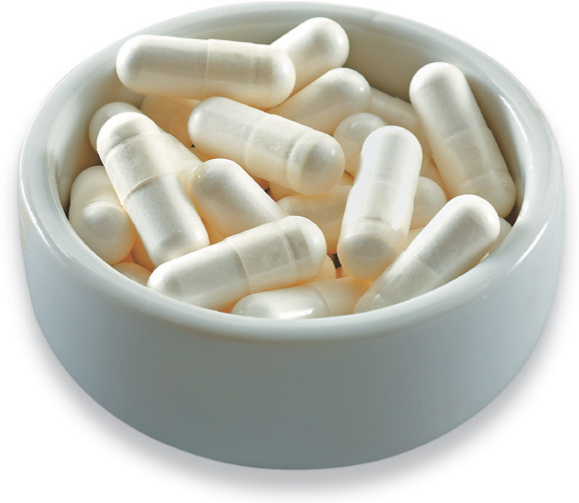
Calm Your Appetite for Carbs with Glutamine

NEXT TIME a carbohydrate urge hits, reach for the white stuff. No, not granulated sugar. Glutamine. L-glutamine (also known as glutamine) is the most abundant amino acid in the human body. We store the majority of it in our muscles and use it up in heavy exercise, which is why it’s such a popular supplement among bodybuilders and athletes. (It’s also critical for the immune system; one of the reasons marathoners frequently get sick after the event is that so much glutamine is used up during intense exercise.) Glutamine’s also a very important nutrient for intestinal health and wound healing. And glutamine can help with cravings. For both sugar and alcohol.
I first learned about using glutamine from Robert Atkins, M.D., who actually learned about it from Roger Williams, M.D. Williams, a pioneer in nutritional medicine, was the father of the term biochemical individuality and the author of several books on nutrition and alcohol. He was one of the first to recognize the deep and intimate connection between cravings for alcohol and cravings for sugar, and he used glutamine for both.
It started back in the 1950s, when Williams did an experiment with alcohol-loving rats. First he established which rats liked to drink by giving them the opportunity to drink freely from either of two bottles—one filled with tap water and one containing 10 percent alcohol. Then he picked nineteen rats that tended to like the alcohol the most, and divided them into two groups. One group received 100 mg of L-glutamine mixed with their food, the other group didn’t.
At the end of 17 days, he returned all the rats to a regular diet of Purina rat chow and watched and measured what they drank.
The rats fed the glutamine consumed, on the whole, 35 percent less alcohol over the next nine days than the rats that were not fed the glutamine. Williams concluded that “glutamine administered orally appears to be a relatively effective agent in decreasing the voluntary consumption of alcohol by rats.”
It also seems to work on humans. In a study published in the Quarterly Journal of Studies on Alcohol in 1957, Williams found that 1 g of L-glutamine in divided doses with meals significantly reduced both cravings and the anxiety that accompanies alcohol withdrawal. In another experiment, a daily dose of about 3 teaspoons did the trick for about three-quarters of the people studied. Why these studies were never followed up on amazes me, but glutamine continues to be used by many knowledgeable practitioners who work with both alcoholics and sugar addicts, and it’s used in many alcoholism programs across the country.
When you experience a craving, it’s because your brain wants sugar. And it wants it now! Glutamine is an alternate source of glucose available to the brain, plus it has the added advantage of getting there quickly! You can open a capsule and put it under your tongue and you’ll feel the crave-reducing effect within minutes. Or better yet, put a heaping spoonful in water.
“[Glutamine] provides a ready source of brain fuel for hypoglycemics and helps stave off sugar cravings ... that develop when blood sugar levels drop too low,” says Joan Mathews-Larson, Ph.D, director of the excellent program for addicts at the Health Recovery Center in Minneapolis.
Abram Hoffer, M.D., Ph.D., a Canadian psychiatrist and one of the pioneers in the practice of orthomolecular medicine (the practice of using megavitamins and nutrients to treat disease) called L-glutamine “an amino acid that decreases physiological cravings for alcohol” and “one of the two primary energy providers that ... provide fuel to the brain.”
Atkins has suggested the following for a sugar urge: Take 1 to 2 g of L-glutamine, preferably with some heavy cream and just a touch of nonsugar sweetener. “The immediate desire to eat something sweet will pass,” he said. “For a reference attesting to its efficiency, ask any of the 8,000 Atkins Center patients for whom I have prescribed it!”